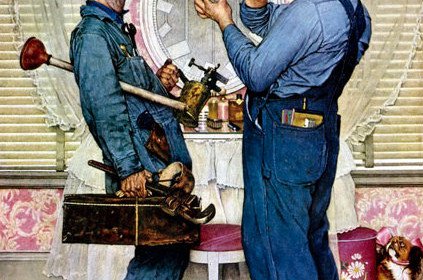How to Unclog Your Toilet
Simple tools and simple techniques for fast results
A plugged toilet can require professional intervention. But in the vast majority of cases, you can do exactly what a plumber would do. That means starting with a plunger and then, maybe, using a “snake.” Until you’ve tried those methods, don’t schedule an expensive house call.
Don’t flush!
When a flush seems weak, you’ll wonder whether the toilet is plugged. Don’t find out by flushing again. If the toilet is badly plugged, you could end up with an overflow. Instead, lift the lid off the tank and raise the flapper by hand for just a couple seconds. That will release a little water into the bowl so you can see whether it flows down the drain.
Plunger pointers
- If the bowl is nearly overflowing, wait. In most cases, the water level will slowly fall. That may take 15 minutes or more, but better to delay than to slop sewage all over the floor.
- Use a plunger with a fold-out flange. It will seal better around the toilet drain for a more powerful plunge.
- Start gently. Before your first push, the plunger is full of air, so a hard push will blast out a messy sewage explosion. Slowly increase the force of your thrusts until you know how hard you can push without making a mess.
- You need water in the bowl. Driving air down the drain won’t work. So if the water level drops too low, add some by lifting the flapper.
- Don’t give up. Clearing a stubborn clog can take 20 pushes or more.
Send in the snake
You can use a standard drain snake to unplug a toilet. Better yet, use a special snake designed just for toilets: A “closet auger” (around $20) has a rubber sleeve to protect the toilet bowl from scrape marks and a long handle that gives you some extra distance from the splashy action. It’s easy to use: Just insert the snake and turn the handle that spins the snake. As it twists deeper into the drain, the corkscrew tip will either break up the clog or snag the clog so you can yank it out. When snaking fails, the next step is to remove the toilet. That allows easier access to the clog, whether it’s in the toilet or in the drain lines.
